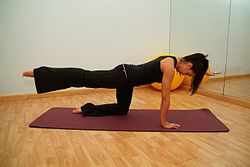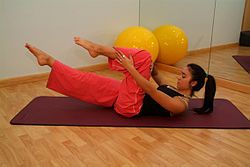Pilates

The Pilates method was named after its founder, Joseph Hubertus Pilates, who, as a child had suffered from rachitis, asthma and arthritis. This is why at an early age he devoted his life to doing sports and living a healthy life. He did exercises, built his body and did yoga. Due to his determination at an age of 14 he was able to sit for an artist as a modell for anatomical charts.
In 1912 he moved to Britain and worked as a circus performer, a boxer and a self-defense trainer. When the world war broke out German citizens including Pilates were relocated in an internment camp on the Isle of Man and it was here that he began to elaborate his famous method. Due to his complex method, the trainees, his compatriots got out of the camp physically strengthened and they were able to avoid the flu pandemic, which, in that period had killed masses of people.
In 1926 Pilates moved to the USA and during the boat trip he got acquainted with Clara, his wife-to-be, and they together worked on a new method of physical exercies, called contrology. Then Pilates opened his fitness centre in New York, in the building of the New York Ballet Company. The best dancers and dance teachers of that period saw Pilates on a regular basis for advice and they attended his lessons. Using "Contrology" they could shape their bodies and gain unbelievable flexibility. The next 40 years represented a golden age in the life and professional work of Joseph Pilates. He was working on and continuously improving his exercises until his death. We owe him several hundreds of exercises, which are still in use.
Joseph Pilates elaborated 6 basic principles to support his method.
- Concentration : it is the key to conscious movement. Exercises need to be performed attentively with maximum concentration.
- Control. Physical and spiritual controlling are necessary for muscular control, coordination of movements and breathing.
- Centering : One of the basic principles of the method is that each movement is derived from a so-called powerhouse, that is the lower back, abdomen and hip, which surround all the vital organs of the human body. These areas represent the centre of the body.
- Breathing: The correct breathing technique is essential when doing exercises. Each series of exercises includes a special breathing technique.
- Flow or efficiency of movement: each exercise need to be performed at its own pace. It allows them to flow within and into each other.
- Precision: The correct performance of the exercise is very important. The number of repetitions may be reduced but the correct and precise performance is a requirement of utmost importance.
